LIGHTWEIGHT PORTABLE VERTICAL DIPOLE ON A FIBREGLASS FISHING POLE
An advertisement for the i-Pole by Proantennas on the WIMO Homepage
made me curious and I decided to give that antenna system a try too. My
primary interest was a lightweight portable vertical antenna for 40m,
as for 20m - 10m I use my C-Poles.
Many thanks to Steffen, DL6SFR, for sending me two more links to portable vertical dipoles (see bottom of page).
A load of telescopic whips I bought
at a Radio Shack Sale on a recent trip to the US, as well as a 6m / 0.6m
fibreglass pole from Lambdahalbe
awaited to be used in a project. Unfortunately at the time of writing
the telescopic whips are no longer avalable at Radio Shack, but any whip
could be used.
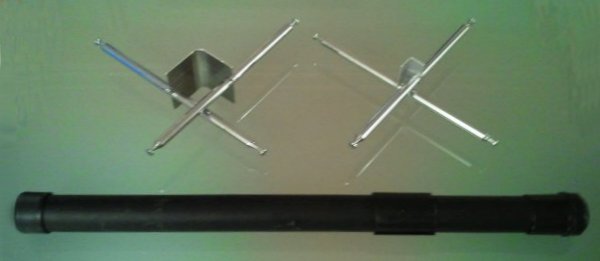
4 telescopic whips per capacity hat, total span 1.9m, mounted crosswise bottom to bottom on
angle brackets of different sizes to fit the pole
I chose the distance between the two capacity hats for a resonance at 20m without loading coils:
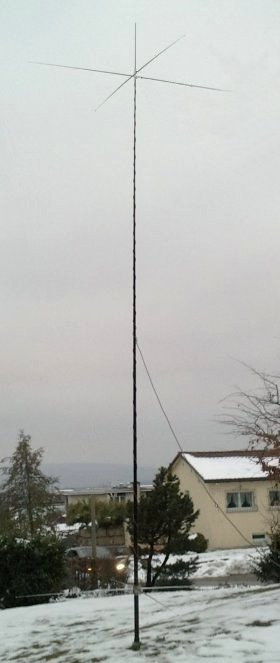 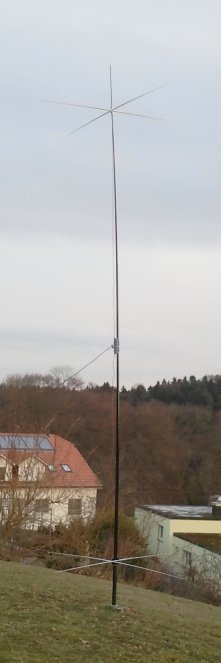
Vertical dipole for 20m (no coils) and 40m (w. loading coils), 4.8 m tall.
The coax feeder has to be routed as far away from the lower part of the antenna as possible. An angle of 45° ist adequate.
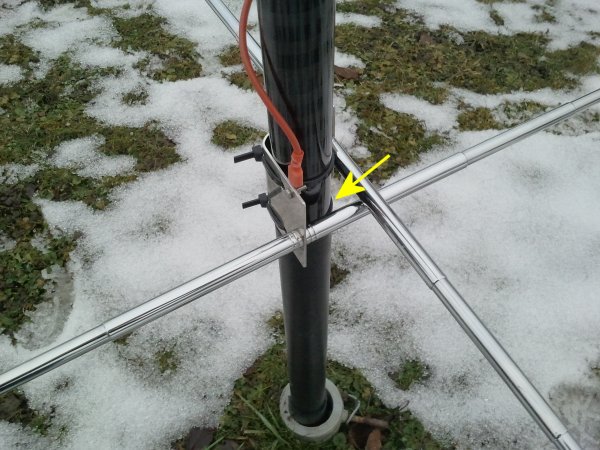
Lower capacity hat, tied to the fibreglass pole. The step between the tapered elements
(yellow arrow) prevents the bracket from slipping down.
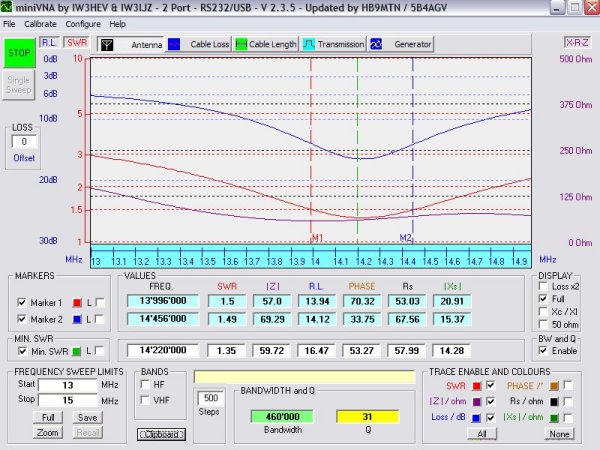
Performance of 20m vertical dipole, note 1.5:1 SWR bandwidth of 460 kHz!
As I mentioned before, my interest was mainly a vertical dipole for 40 m. So I opened my EZNEC 5+
and started to model. The distance between the capacity hats of 4.3 m
was given by the 20m resonance. Because of the asymmetric ground load at
the lower leg of the antenna, I fed the dipole silightly off center and
reduced the inductance of the lower loading coil empirically.
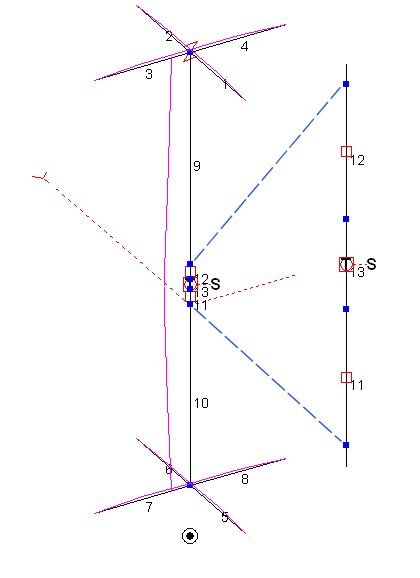 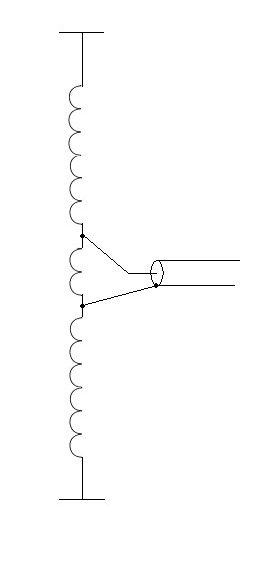
lower capacity hat = 0.5 m above ground
distance lower capacity hat to source S = 2 m
distance source S to top capacity hat = 2.3 m
Inductance of lower loading coil (in wire 11) = 6 uH
Inductance of upper loading coil (in wire 12) = 9 uH
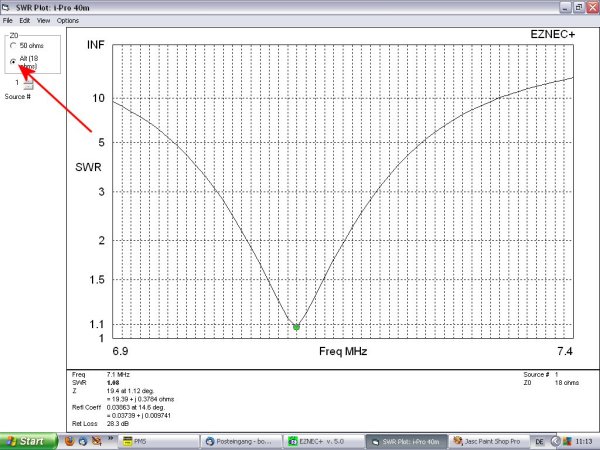
Excellent SWR, but Z = 18 Ohms
EZNEC-File
The low impedance can be shifted to
the desired 50 Ohms by means of a beta-match, simulated in EZNEC by
insertion of a shorted stub (Transmission Line).

Shorted transmission line T (3m 50 Ohm coax, VF = 0.67) parallel to the source S
at the center of wire 13.
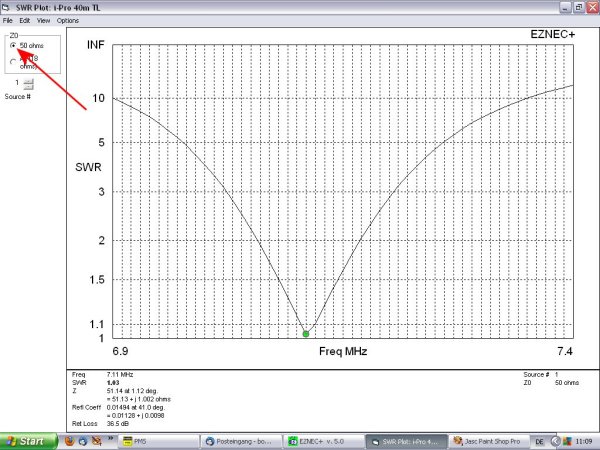
With shorted transmission line T parallel to the source Z = 50 Ohms
EZNEC-File with transmission line at feedpoint
50 Ohm coax has an inductance of
about 0.25 uH / m mechanical length, the "transmision line" can be
replaced by a coil of 3 m * 0.25 uH / 0.67 VF = 1.12 uH
The loading coils were wound on a
50mm PVC tube. 13 and 14 turns of installation wire and the shorted stub
from the EZNEC simulation was substituted by an airwound coil across
the feedpoint of 11 turns with16 mm inner diameter.
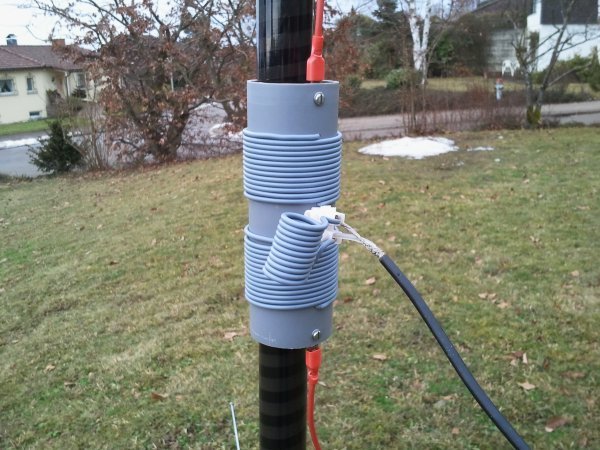
That's how the first setup of the coil assembly looked like.
(Note that the coil was mounted upside down on this photo.
The coax shield and the lower inductance should be towards ground).
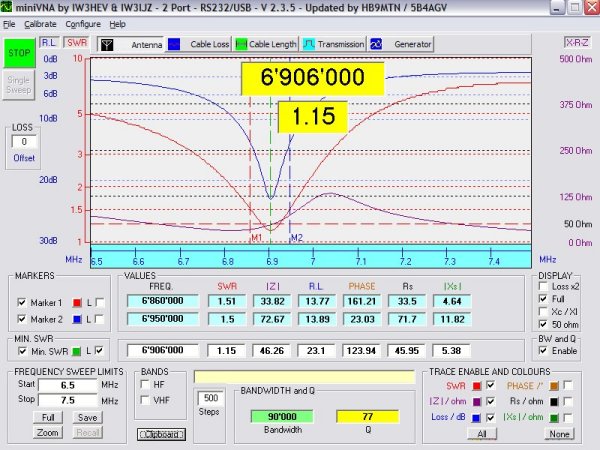
Results at lowest possible frequency with fully extracted telescopic whips.
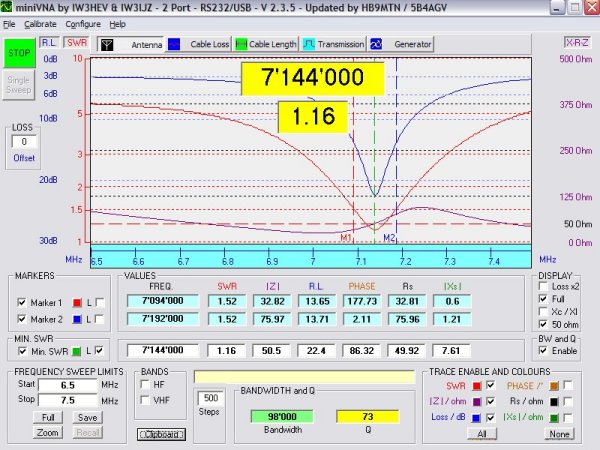
Results with telescopic whips of lower capacity hat adjusted to the operating frequency.
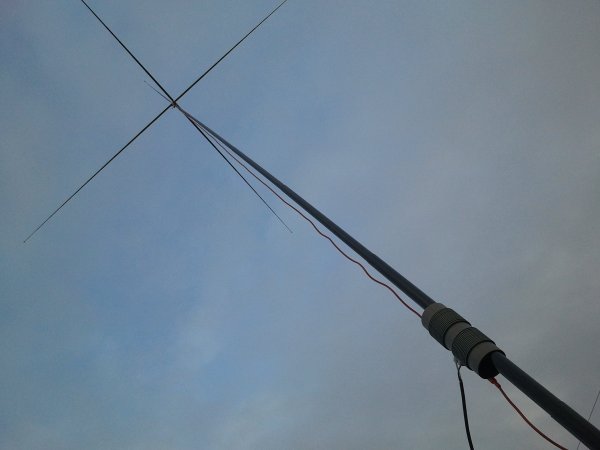
Vertical dipole for 40m, top capacity hat, loading coils and feedline.
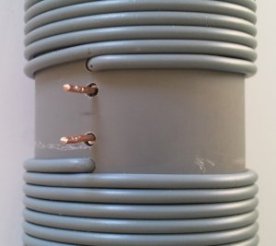 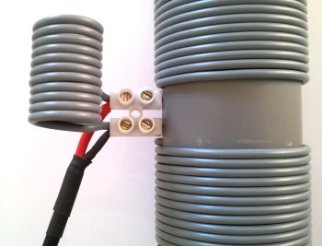
Feedpoint detail. Coil across feedpoint 1.12 uH
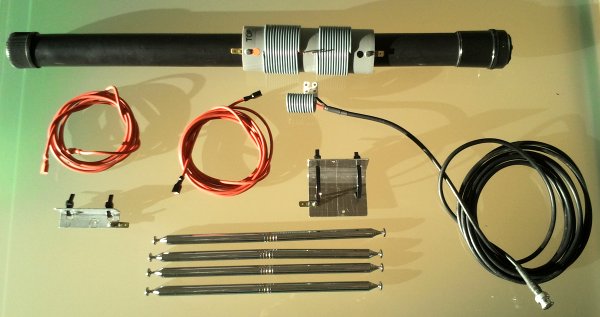
Vertical dipole for 40m, all parts, total weight less than 1.5 kg ( 3.3 pounds).
| 
